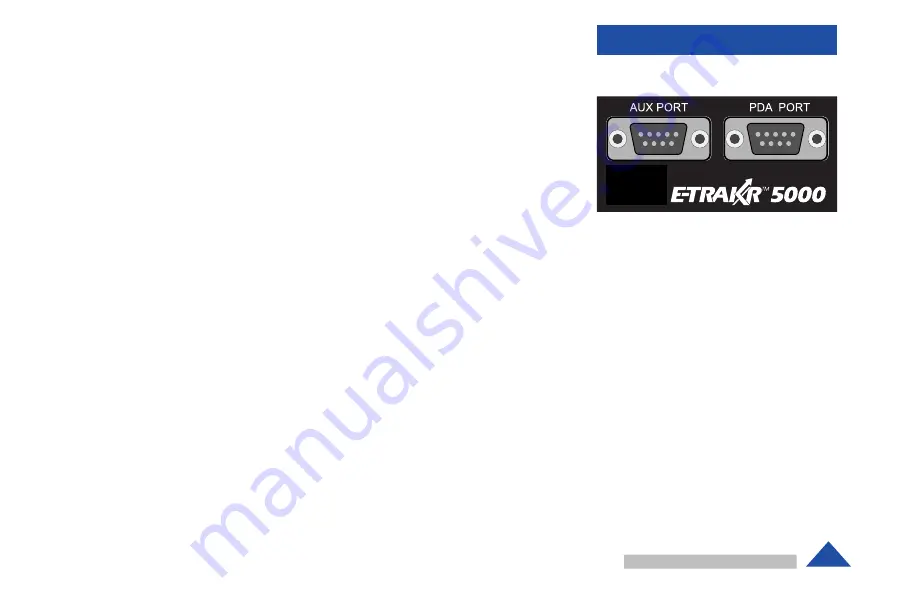
23
The E-TRAK/R is designed to also work as a stationary tracking system.
This can be helpful in tracking multiple beacons as they pass by the
tracker’s “checkpoint.” Data collected by the E-TRAK/R (including beacon
ID, bearing, and RSSI-relative distance) are sent out the AUX port on the
front of the E-TRAK/R’s panel. Data can be collected by several commercial
data recording devices on the market.
To set the E-TRAK/R into Stationary Mode:
1
Establish a location for the E-TRAK/R receiver and antenna array.
Mount the antennas with a clear view of the traffic to be monitored.
Secure the E-TRAK/R in a weather resistant location. The E-TRAK/R
is not intended to operate in it’s shipping case with the top lid closed.
2
Attach the antenna cable to the correct antenna connector on the
E-TRAK/R front panel (either UHF or VHF). Attach a Command Trans-
mitter Antenna or the Terminator to the CMD TX connector. You do not
have to attach a GPS Antenna.
3
Connect the NMEA Data Recording device to the RS-232 AUX PORT on
the front panel of the E-TRAK/R. Be sure to supply the necessary power
to operate this device.
4
Apply 10-32 VDC power to front panel of the E-TRAK/R. The PWR
STATUS LED will be green with applied power.
5
Establish a communication link between the Control Head and E-TRAK/R.
If using the Wireless link, no physical connection is necessary. Turn on
the PDA Control Head with the ON/OFF/DIM button. The E-TRAK/R
Control Head Software starts automatically and displays the main
screen. Choose your PDA communication method cabled/wireless with
the Communication Link Status icon in the lower right of your
OPERATION
E-TRAK/R Stationary Mode
Содержание 5000
Страница 1: ...RDF Pulse and GPS Enhanced Tracking System...
Страница 29: ...35 NOTES...














































